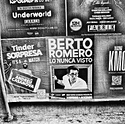alanrockwood
Member
- Joined
- Oct 11, 2006
- Messages
- 2,189
- Format
- Multi Format
OK, let me first acknowledge that this is no a new topic, but let me explain why I think a new discussion is worthwhile.
Generally speaking, most reviews say that these scanners are capable of about 2200 to 2400 effective pixels per inch. However, what I would be interested in is what is the best one can do if the film holders are very carefully adjusted to the optimum height (possibly with aftermarket film holders) and if and appropriate level of sharpening is applied and if one scans at a setting 6400 pixels per inch. Ideally the sharpening would be done using a true deconvolution algorithm and the best point spread function for the deconvolution process, but even unsharp mask results would be of interest.
I haven't read any reviews or evaluations or discussions that address those optimal conditions. I'm going to take a wild uninformed guess that one might be able to get into the range of 3000 effective pixels per inch, or maybe a bit more. Does anyone know of real tests that try for the best possible results when varying the parameters that are under user control to their optimal values? I did see one web page where the results seemed to be visually as good as a 4000 dpi scanner (possibly even a bit better), but the work was not described well enough to go beyond a visual impression.
Generally speaking, most reviews say that these scanners are capable of about 2200 to 2400 effective pixels per inch. However, what I would be interested in is what is the best one can do if the film holders are very carefully adjusted to the optimum height (possibly with aftermarket film holders) and if and appropriate level of sharpening is applied and if one scans at a setting 6400 pixels per inch. Ideally the sharpening would be done using a true deconvolution algorithm and the best point spread function for the deconvolution process, but even unsharp mask results would be of interest.
I haven't read any reviews or evaluations or discussions that address those optimal conditions. I'm going to take a wild uninformed guess that one might be able to get into the range of 3000 effective pixels per inch, or maybe a bit more. Does anyone know of real tests that try for the best possible results when varying the parameters that are under user control to their optimal values? I did see one web page where the results seemed to be visually as good as a 4000 dpi scanner (possibly even a bit better), but the work was not described well enough to go beyond a visual impression.






